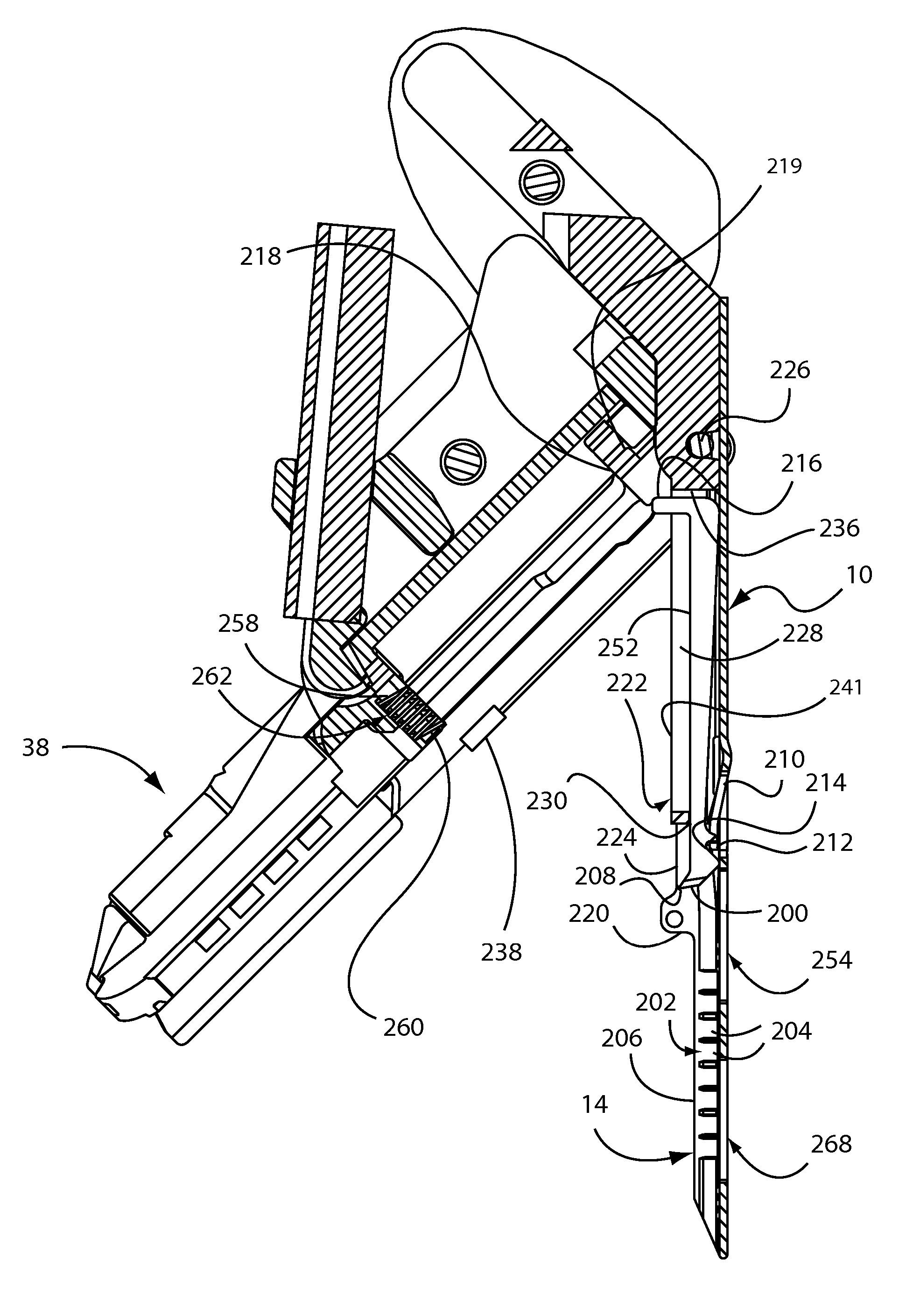Anastomosis System with Anvil Entry Hole Sealer
a technology of anastomosis and sealing device, which is applied in the field of surgical equipment and methods for performing anastomosis, can solve the problems of emboli detachment, time-consuming and labor-intensive suturing process, and high surgical skill, and achieves the effect of enhancing the sealing effect and minimizing the cross-sectional area of the anvil
- Summary
- Abstract
- Description
- Claims
- Application Information
AI Technical Summary
Benefits of technology
Problems solved by technology
Method used
Image
Examples
Embodiment Construction
[0148] As shown in FIG. 1, one embodiment of an anvil 10 includes a handle 12 and an anvil arm 14 extending from the handle 12. The anvil arm 14 may be oriented substantially perpendicular to the handle 12, or oriented at a different angle. The anvil arm 14 may be provided with one or more staple bending features 16 on opposite sides of the anvil arm 14. In the anvil 10 shown in FIG. 1, the staple bending features 16 each include a plurality of recesses 20 which receive the ends of staples 22 and cause the staple ends to bend over. At least one of the staple bending features 16 may be configured differently or omitted, if desired. The staples 22 may be connected to a staple holding strip 24. The staples 22 are U-shaped and are arranged in a spaced apart parallel configuration such that the staples 22 all lie in a single plane. Alternately, the staples 22 may be shaped differently, and / or lie in one or more different planes. An exemplary anvil arm 14 has a height and a width of about...
PUM
 Login to View More
Login to View More Abstract
Description
Claims
Application Information
 Login to View More
Login to View More - R&D
- Intellectual Property
- Life Sciences
- Materials
- Tech Scout
- Unparalleled Data Quality
- Higher Quality Content
- 60% Fewer Hallucinations
Browse by: Latest US Patents, China's latest patents, Technical Efficacy Thesaurus, Application Domain, Technology Topic, Popular Technical Reports.
© 2025 PatSnap. All rights reserved.Legal|Privacy policy|Modern Slavery Act Transparency Statement|Sitemap|About US| Contact US: help@patsnap.com



